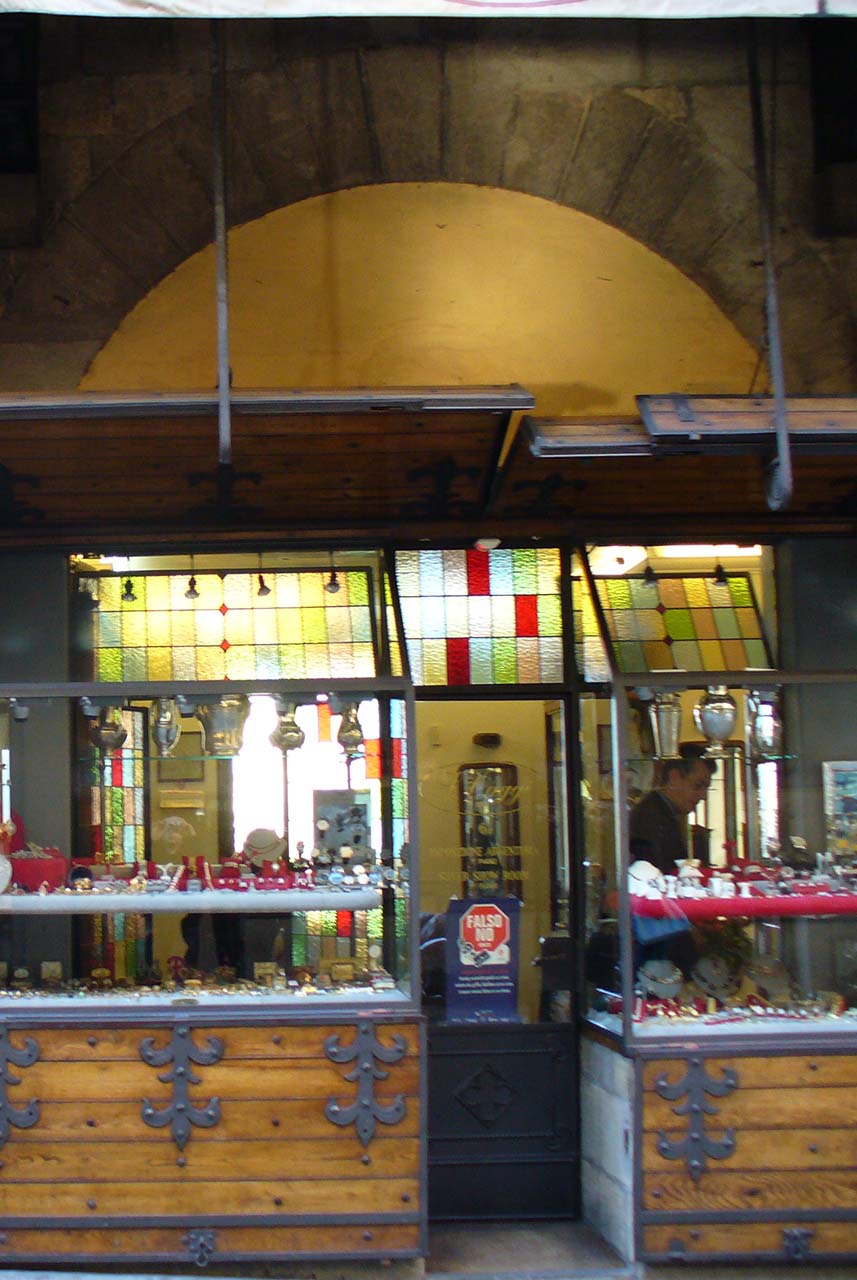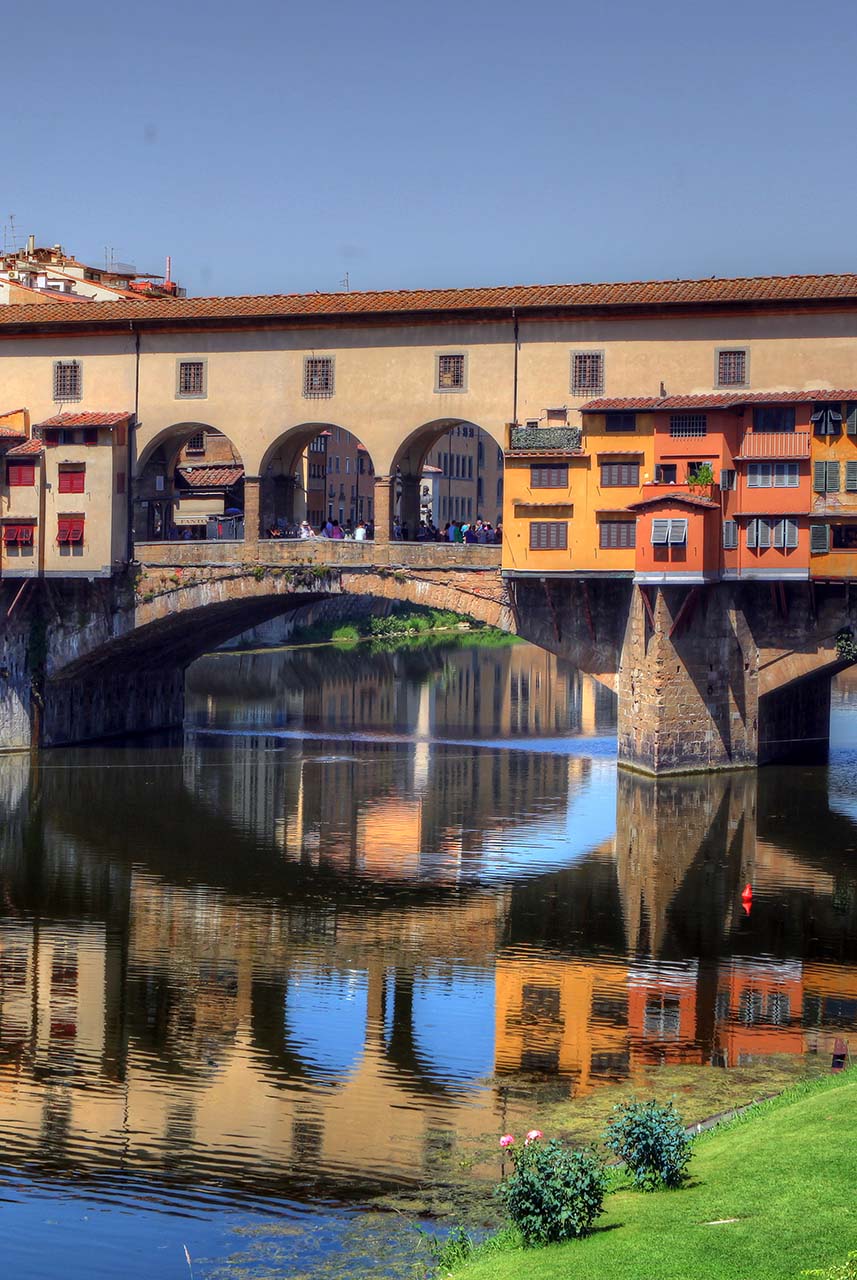Call us for more information
055 222431The Cappa


At a later time, on the orders of Grand Duke Ferdinand I, the mostly food shops were transformed into goldsmiths and jewellers, to give greater prestige to the bridge: it was the end of the 16th century. Then, around the 17th century, the back shops were added and thanks to the proceeds obtained from the rental of the shops, the reconstruction of the bridge could begin.
Ponte Vecchio was spared from the German mines, which blew up all the nearby neighborhoods with the aim of blocking access to the city, while the flood that you will all remember was devastating for the shops and for the whole the neighboring area.
Even today, Ponte Vecchio remains the symbol of the city of Florence and, although the only objective was initially to cross the river, it soon took the form of a street, a market, a a square.